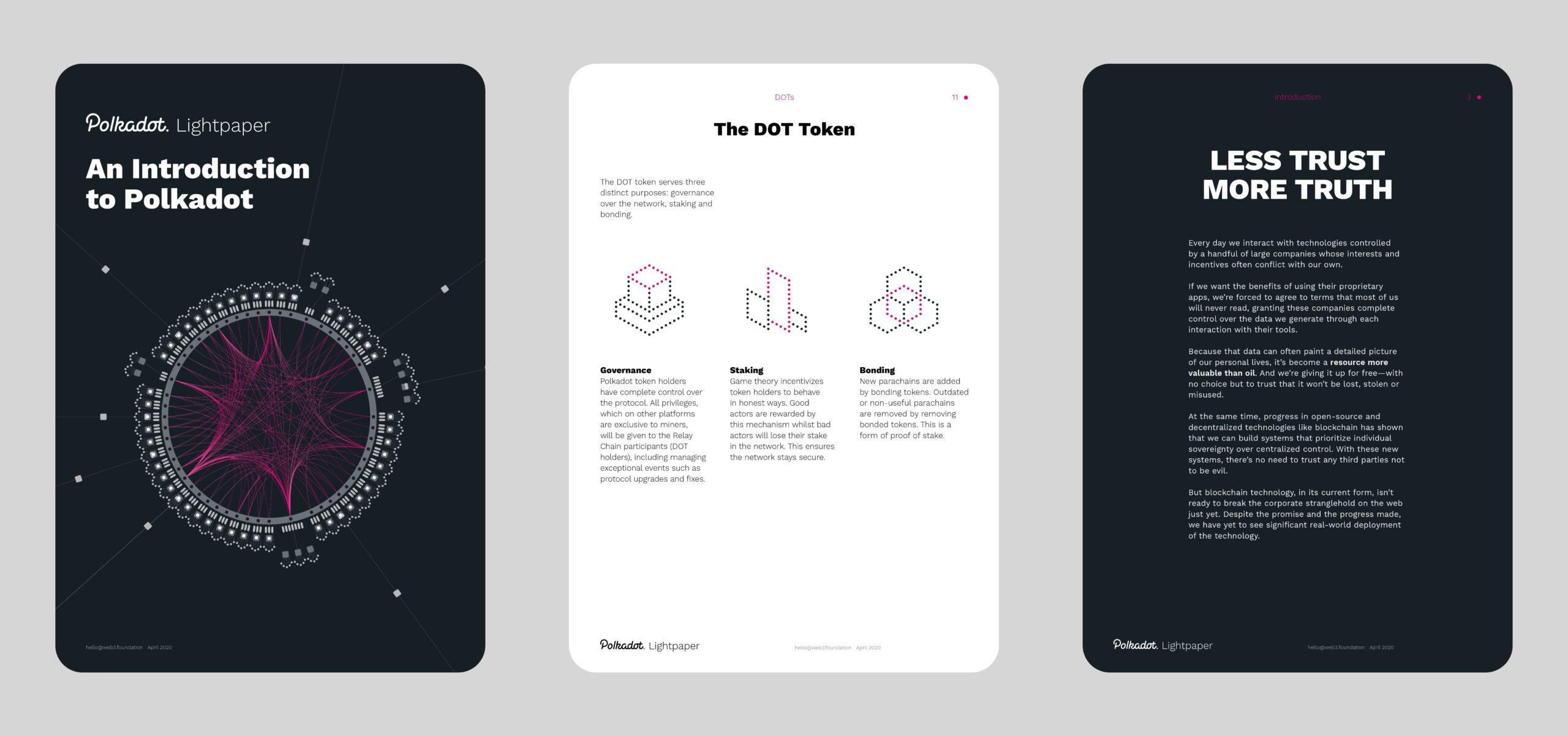
How to Write Your Litepaper
Litepaper is one of the most important documents you will prepare during your journey toward launching a product.
In this article we cover what the Litepaper is, why it's so crucial and help you with preparing your own one.
What is Litepaper and why do you need one
Litepaper is one of the most important documents you will prepare during your journey towards launching a product, but one step at a time.
Which blockchain enthusiast hasn’t heard of the whitepaper? Especially the most famous “Bitcoin: A Peer-to-Peer Electronic Cash System” published by Satoshi Nakamoto on October 31, 2008. Whitepaper itself is mostly known as a comprehensive source with a deep technical description and economic aspects of a product and the technology behind it. Creating a whitepaper is a crucial step for a cryptocurrency startup to establish its credibility and professionalism., and it helps users and investors understand how a business is working.
It’s also important to highlight that terms of whitepaper and litepaper are not only found within the cryptocurrency world, but they are also produced by traditional businesses, academia, and even governments. As Investopedia [1] describes it “A white paper is an informational document issued by a company or not-for-profit organization to promote or highlight the features of a solution, product, or service that it offers or plans to offer. White papers are also used as a method of presenting government policies and legislation and gauging public opinion”.
The whole problem around the whitepaper idea is that most of the users and investors (with the first contact) won’t have time and enough technical or economical understanding to go through such a comprehensive file.
This is the moment when the litepaper comes with help. In essence, a litepaper is a condensed and simplified version of a whitepaper, serving as a preview to spark the curiosity of potential investors and users. A whitepaper is an extensive and technical document, akin to an academic paper, that provides comprehensive details on a project. In contrast, a litepaper focuses on presenting the essential information in a concise and accessible manner, aimed at capturing the attention of a wider audience, including those who may not have the expertise or time to delve into a highly technical document.
Below we provide an overview of the main differences between the two documents:

Consider this scenario: You are about to create a short and highlight the most important area’s version of your whitepaper. How to do it? It’s important to clearly explain the project’s objectives, how it utilizes blockchain technology, and details on the project’s team, product, initial metrics, use cases, and potential applications. Additionally, you can provide information on how a token economy can facilitate its success. The whole content should be easy to digest for an average user and provide her with the most crucial information. However as litepaper is used as a promotional resource as well, don’t forget to make it as well a little bit catchy and involve your inner marketer while preparing it. The other thing is to make it looks attractive. Litepaper is not an academic form of writing, like a whitepaper. You can get the help of a designer and prepare a beautiful design for it. Below you can find a screen of a few pages from the Polkadot litepaper – we think that it looks great! [2]

It’s advisable to maintain consistency in writing style, language, and tone between your litepaper and whitepaper. Even as litepaper is more promotional and less in-depth one of the writings, it’s crucial that the reader will see consistency between the two files. This allows for a seamless transition for the reader from the litepaper to the whitepaper. Therefore, it’s recommended that the same individual or team responsible for writing the whitepaper also draft the litepaper, if possible.
So while we already presented the concept of the litepaper, let’s switch now to the guide which will help you write your own. Before proceeding with it, however, please notice that provided guidelines are a good starting point, but there is no one-size-fits-all approach to writing a litepaper. Depending on the specifics of your project and your target audience, you may need to adapt the approach and include additional sections or information.
Another crucial thing before writing your litepaper is to get to know what is our approach towards it, as it can fit you, or you would like to proceed with another way of operating. At Foundance we help you with your bootstrapping process with your idea, so you can accelerate fast from 0 to funding and growth. Litepaper is one of the important files, which will let us and your audience know more about your project. That’s why we think it’s important to start working on it early, even before the whitepaper. In the startup environment everything is changing very rapidly, it applies to everything. Then our approach is to provide a litepaper early, which will help you start thinking in a more structured way and in the more long-run horizon than it usually happens at the kick-start stage of the venture. We also think that your litepaper will evolve over time, and you will go through versions 1,2,3…in the end, litepaper should help you attract users, advisors, contributors, and potential investors at the beginning of your journey – and you can gain a lot of trust by making good decisions, confronting them with your original vision and changing it when needed. Then don’t worry, you don’t need to know everything at the beginning, just start working and update your litepaper over time, letting your audience know, until the moment you think it’s war ready – and then the next step you can consider can be maybe making a whitepaper.
Write your own Litepaper!
While we got the context in mind, let’s see what are important areas while preparing a litepaper:
Define your audience: Consider who you are writing the litepaper for and what information they will need. Your audience may include potential investors, developers, or users, so it’s important to tailor the content to their needs. For example: if your users are mostly developers – then anyway you will need to provide more technical information than you would need when you would be addressing another target group.
Explain the problem your project is solving: Start by clearly defining the problem or challenge that your project is addressing. Be specific and provide real-world examples to help your audience understand the problem.
Introduce your solution: Once you have defined the problem, introduce your solution. Explain how your project will address the problem and provide an overview of its key features and benefits.
Describe your technology: Describe the technology that powers your project in clear and simple language. Avoid using technical jargon that may be difficult for your audience to understand. Provide a high-level overview of your technology, including any innovative or unique aspects.
Outline your roadmap: Provide a timeline of your project’s development, if you don’t have one yet you can state what are the most important points you are going to achieve. This will help your audience understand the progress of your project and its potential future developments.
Show market environment: Let your audience know what segment of the market you are entering and how you want to become an important player in it. Is there already some competition in your field, and what the experts say about the topic – could be parts of this section.
Discuss your team and partners: Introduce the team behind your project and any partners that you are working with. This will help build credibility and trust with your audience.
Explain your token economics: If your project involves a token, explain its economics, including the total supply, distribution, and use cases.
Include a call to action: End your litepaper with a clear call to action, such as signing up for your project’s newsletter, joining your community on social media, or investing in your project.
Besides putting a focus on the above areas you need to explore within your document, below you can find a few tips on how to do it correctly:
Review and revise: Before publishing your litepaper, review and revise it to ensure that it is clear, concise, and free of errors. Get feedback from advisors which you can help to find on Foundance to help improve the quality of your document.
Focus on your unique selling proposition: Your litepaper should clearly articulate the unique value proposition of your project. What sets your project apart from others in the space? What are the key benefits that users, investors, or developers will gain from using or participating in your project?
Use visuals to illustrate your points: Visuals such as diagrams, charts, and infographics can be powerful tools for communicating complex concepts and ideas. Consider including visuals in your litepaper to help illustrate your key points and make the information more accessible to your audience.
Incorporate real-world examples and use cases: To help your audience understand the potential of your project, consider including real-world examples or use cases. This will help illustrate how your project can be applied in practice and provide tangible evidence of its value.
Keep it concise and focused: While it’s important to provide enough detail to explain your project clearly, it’s equally important to keep your litepaper concise and focused. Avoid including extraneous information or getting bogged down in technical details that may not be relevant to your audience.
By following these steps, you can create a clear and compelling crypto litepaper that effectively communicates your project’s value proposition and potential.
If you enjoyed this post let us know and provide some feedback, we are here to help but also to learn with you!
Citations:
[1] https://www.investopedia.com/terms/w/whitepaper.asp
[2] https://polkadot.network/whitepaper/